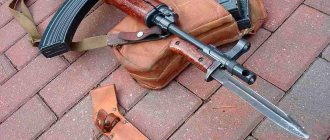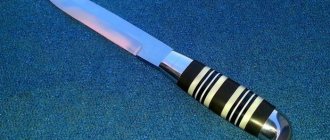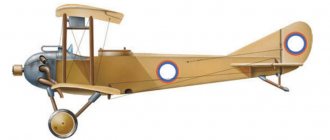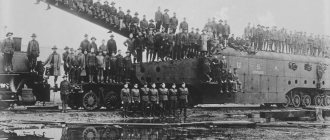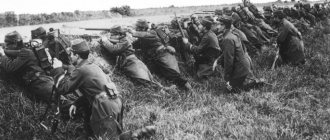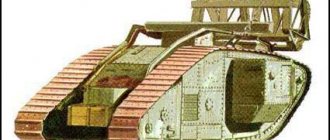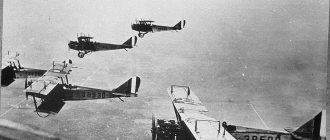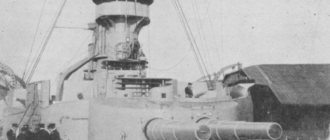The bayonet is a cold hand weapon for protecting the infantryman. It is a direct descendant of the fighting pikes, having undergone several changes over many decades. To this day, this weapon remains in service in many armies around the world. Now it is an auxiliary, but very effective piercing and cutting weapon of defense and attack.
German bayonet knife.
Historical reference
The founder of the modern bayonet is considered to be the spear, known since ancient times, which was improved by the French. To protect infantrymen in the city of Bayonne, a special dagger known as a “bayonet” or “baguinet” was invented.
The French were the first to attempt to cross firearms with bladed weapons.
Bayonet knife.
At the beginning of the 18th century, the first needle bayonets appeared in the arsenal of European armies.
They supplanted baguettes, thanks to their more advanced design: the arrangement of a round bushing, with the help of which it was quickly attached to the barrel of a weapon.
The detachable bayonet was a needle-shaped T-shaped blade, equipped with three or eight blades, which ensured its considerable strength and optimal lightness.
A story of second chances
In 1898, the legendary German Mauser-98 rifle was developed. In the same year it was adopted by the German army. Subsequently, the rifle became the most popular non-automatic weapon of this type in the world. Mausers experienced their baptism of fire in 1900-1901, during the Chinese Boxer Uprising.
After the adoption of new rifles, the issue of bayonets became acute. Since bayonet charges still played a significant role in the battles of that time, it was urgently necessary to develop new bayonets. But if old rifles were sent en masse to reserve warehouses, they decided to do something different with bayonets. They were simply redesigned to fit the new rifles. To do this, the crosspiece with the tube for the barrel was simply sawed off, just like a piece of the tail part of the blade.
Thus, a new bayonet was obtained, suitable for use with Mauser 98 rifles. Modernized samples of edged weapons were supplied to all parts of the vast empire, only Bavaria received the least of them. The fact is that a huge number of old-style rifles were produced there, and it was decided that it was inappropriate to send the weapons for melting down. Instead of sending them to reserve depots, it was decided to equip rear and support units with old rifles.
Modernized old-style bayonets were supplied not only to infantry. They were received by reservists, bicycle and automobile units and personnel of testing units.
Famous products bayonet knives from the German WWII era
Today in weapon collections you can find models used by German troops during the Great Patriotic War. Their popularity was great; German troops equipped over 40 factories with this type of bladed weapon.
Each branch of the military had its own model of blade.
The main differences were:
- type of mark containing the manufacturer’s data;
- the presence of a motto in the form of an inscription and a symbol of the branch of service for which the blade was issued;
- the product is marked, indicating: year of manufacture of the model, digital code of the manufacturer, type of product, material;
- State inspection mark of the product in the form of a digital code.
The German troops were always equipped with the best types of weapons; existing firearms and bladed weapons were constantly improved.
Knives of the first world war.
Manufacturer, brand
Solingen is a city in which there were several factories that manufactured edged weapons for rifles. Production plants operated in the capital of Germany, as well as in the cities of Stern and Rheinberg. The weapon was produced according to uniform standard conditions, but was necessarily marked with its own mark on the blade.
In addition to the brand, each manufacturer had the right to put its own marks on various parts of the weapon.
The new bayonet and its trials during the First World War
The outbreak of the First World War proved that the modernized bayonets for the Mauser 98 rifle turned out to be a very useful acquisition for the infantry. They could not only be wielded as a pike, but also used as trench knives. The enemy immediately felt the power of Germany's edged weapons, after which they began to hastily invent their own edged weapons for trench battles. While the French were making all sorts of “nails,” the Russians were very successfully using sapper blades, which they used to chop down the enemy in between digging “from here until the evening.”
In 1915, the German arms industry released a new bayonet, which completely copied the modernized bayonet for the Mauser 98 rifle. Soon even sappers were required to have at least 10 bayonets per company, in order to fight off the enemy if something happened. Towards the end of the war, in 1917, German assault units received new bayonets. It turned out to be an excellent weapon for trench warfare; even attached to a rifle, it did not hinder movement in the trenches.
Model 1915 bayonets were produced until 1919, after which production was curtailed until 1927. The weapon was in service with the Reichswehr until 1933. After the appearance of the Wehrmacht, they remained in service.
During the First World War, modifications of bayonets with a “saw” on the butt appeared. The Entente immediately branded them as inhumane weapons and called for a ban on their use. The French added on their own that bayonets must be cleaned and disinfected before battle, otherwise the wounds could become infected. Dirty and limp in the trenches, the German soldiers enthusiastically began to clean their bayonets, sticking them into the ground.
However, the production of sawtooth bayonets was discontinued, and on existing bayonets with a “saw” on the butt, many began to saw off the “front sight,” that is, the notch. Somehow I immediately remembered the AKM bayonet and its sawtooth notch on the butt. For experts, I’ll explain, the one that is 6x4.
The best models of Wehrmacht knives: description
The equipment of soldiers and officers of the German Armed Forces included bayonets for wearing in parades and for use in combat. The following types are among the models that have received high praise from soldiers participating in combat operations.
Front
Ceremonial - a single-edged bayonet knife (sometimes double-edged or equipped with a saw on the butt), with a handle decorated with an eagle’s head. Main characteristics of this type of product:
- Only high quality steel is used for the blade;
- the length of the officer’s knife is 200 mm, the soldier’s knife is 50 mm longer;
- plastic or bone (for example, deer antlers) are used to make the handle; the tip is always made of metal and has the shape of a bird's head.
Ceremonial bayonet knife.
Folding
The folding bayonet for Wehrmacht soldiers was made in two versions:
- universal single-blade. Material – carbon steel. Product length 95 mm;
- pocket with a locking button, releasing the blade by pressing a button.
Italian folding bayonet.
Daggers
The Wehrmacht troops used the following types of daggers:
- for SS men with a blade with a blade length of 22 cm;
- for stormtroopers with two blades 23 cm long;
- award for attack aircraft from Ernst Remm;
- a special type for cadets of the German Political Academy;
- trench blade 12 cm long;
- for Postal employees;
- for use in the fire service.
Scandinavian dagger bayonet.
Solingen
Solingen products combine various types of German weapons for all branches of the military:
- daggers;
- bayonet knives of all brands;
- cutlasses and other hand weapons, put on stream.
German bayonet knife.
Bayonet from World War 1
Bayonet knives of the First World War are represented by weapons with a straight blade, 15 cm long, sharpened on one side. The handle is equipped with a groove and a button necessary for mounting on the rifle barrel.
Deciphering the Mauser rifle bayonet
German punctuality requires the following to be applied to the product:
- data from the service that provided the verification – RZM;
- symbol M - metal data;
- weapon type designation – 7;
- manufacturer's numbers;
- date of manufacture.
Description of the 1871/98 bayonet
The bayonet for the Mauser 98 rifle has a straight blade with a one-sided sharpening. The blade length of the new and old modifications was 520 mm. As I said above, sometimes there are models with a “saw” on the butt. The blade has fullers on both sides. The blade is powerful, the handle is one-piece, it has linings made of wood or bakelite. Most often they are held in place by a screw connection, but there are also linings with rivets.
There is a T-shaped groove on the head of the handle. Near the crosspiece on the handle there is a special recess designed for cleaning the groove. The first modified bayonets were supplied in genuine leather sheaths, but after 1915 they were replaced with new metal ones.
Externally, the old-style bayonets differ from the 1915 models in that the old ones have a solid wooden handle, while the new ones have linings.
The most valuable are the bayonets of the first years of production, i.e. those that have been modified. They have old marks that were not removed during the modernization process. In general, control marks were placed on all modifications of bayonets of this type without exception. Therefore, if you are offered to purchase a sample without a stamp, you should refuse the purchase. Most likely, it will be an artificially aged remake.
That's the whole story about the most famous German bayonet of the First and Second World Wars. The blade is typical for a combat knife.
Bottom line
In modern armed forces, bayonets remain a sidearm in many military units. Their designs continue to improve, leaving them with defense and attack functions.
Previous
Kitchen knivesCheese slicer: 10 well-known varieties for convenient slicing
Next
KnivesSafety precautions with a knife: we use it correctly in everyday life and in battle
Russian bayonet
The history of the Russian bayonet is overgrown with a mass of legends, sometimes completely untrue. Many of them have long been accepted as truth.
Perhaps one of the most interesting references to the use of the bayonet, which various domestic and Western “historians” now love to quote, are the words of the greatest commander A.V. Suvorova: “The bullet is a fool, the bayonet is a good fellow.” Now with these words they are trying to show the backwardness of the Russian army, in fact saying that in the hands of a Russian soldier the gun was like a spear. And the function of the shot was absolutely secondary. Alexander Vasilyevich, if he knew about such an interpretation of his words in the future, would be very surprised.
In the original, words by A.V. Suvorov in “The Science of Victory” sound like this: “Save the bullet for three days, and sometimes for the whole campaign, as there is nowhere to take it. Shoot rarely, but accurately; stab him firmly with a bayonet. The bullet is foolish, but the bayonet is not foolish: the bullet is a fool, the bayonet is a good fellow.” This fragment as a whole completely changes the understanding of that phrase, which is usually illiterately snatched from the works of a commander. The commander just calls on you to take care of your ammunition and shoot accurately and emphasizes the importance of the ability to use a bayonet. The era of muzzle-loading weapons forced one to try to shoot accurately; the importance of accurate shooting could not be underestimated. But smooth-bore guns with bag loading could not provide the high rate of fire required for accuracy, and good bayonet control in battle was very important. This is emphasized by other Suvorov words: “With a bayonet one person can stab three, sometimes four, but a hundred bullets fly into the air.”
The Russian bayonet is traditionally needle-shaped with a three or four-sided blade, a neck and a tube with a slot for putting on the barrel. It is now customary to criticize military officials who kept our soldiers with a needle bayonet for so long, when many armies around the world had already introduced the “cleaver bayonet,” a bayonet with a knife-like blade and handle. They can't come up with any explanations for this. Perhaps the most absurd thing is that military officials believed that “bayonet knives” were of great economic value to the soldier, and they would carry them home from service. And no one needs a needle bayonet. Such nonsense can only be cultivated by people who are far from military history and who have absolutely no idea about the rules for handling government property. It is strange that the presence of standard cutlasses and other bladed soldier weapons is not commented on in any way by the authors of this “wild explanation.”
1812, Borodino, bayonet attacks
Let's get back to bayonets, so - a bayonet for a muzzle-loading gun. It is clear that the bayonet must be permanently attached, but at the same time make it possible to load the gun safely for the shooter. These requirements are only suitable for a triangular bayonet, which has a long neck that moves the wedge of the bayonet away from the muzzle to a distance that is safe for the hand when loading. In this case, the edge facing the muzzle should not be sharp. These requirements are perfectly met by a triangular bayonet with a flat edge facing the muzzle.
A huntsman, a huntsman sitting with a fitting has a cleaver bayonet in a sheath on his side
Did the Russian army have cleaver bayonets? Of course there were. Back in the 18th century. Such bayonets were adopted for Jaeger rifles; in those days they were called dirks. The famous Russian Littikh bayonet, for example, had a cleaver bayonet mod. 1843. Again, a strange picture is drawn of why Russian huntsmen and skirmishers did not cut their hands when loading a fitting with a cleaver blade. The answer to this is simple, rangers and skirmishers solved specific problems with their rifled weapons; in modern terms, they were snipers. An example is the episode associated with the defense of Smolensk in 1812. Against the actions of just one ranger on the right bank of the Dnieper, the French were forced to concentrate rifle fire and use artillery, only by night the ranger’s fire died down. On the morning of the next day, a non-commissioned officer of the Jaeger regiment, killed by a cannonball, was discovered at that place. What need does a sniper have for a bayonet? Only as a last resort does he attach the bayonet to his fitting.
A very important issue was the length of the bayonet; it was determined not just like that, but based on the most important requirement. The total length of the gun with the bayonet must be such that an infantryman can repel a saber strike from a cavalryman at a safe distance. Accordingly, the length of the bayonet was determined in this way. The rifled fittings were shorter than infantry rifles and the cleaver bayonet for them was correspondingly longer. When fired, it caused inconvenience, weighed the muzzle of the barrel down, and deviated the direction of the bullet.
A gun with a needle bayonet in the hands of a skilled soldier worked wonders. As an example, we can recall the feat of Corporal Leonty Korenny, in 1813, in the battle of Leipzig in the village of Gossu, his unit was squeezed by superior enemy forces. Having evacuated the wounded, Korennoy and a small number of comrades entered into a bayonet battle with the French; soon he was left alone, parrying bayonet blows, he inflicted them himself, after the bayonet broke, he fought back with the butt. When Korennoy, wounded by French bayonets, fell, there were many French bodies around him. The hero received 18 bayonet wounds, but survived; in recognition of his highest military valor, on the personal order of Napoleon, he was released from captivity.
Time passed, weapons changed, after the American Civil War, when all the advantages of breech-loading systems for unitary cartridges, characterized by a high rate of fire, were revealed, conversations began in the military environment about the pointlessness of the bayonet. Since with such a rate of fire it will not come to bayonet attacks.
The first Russian breech-loading rifles had triangular bayonets, identical to the old guns. This was due to the fact that 6-line rifles at the beginning of their production were conversions from old muzzle-loading ones, and there was no point in changing the old bayonet for them.
The last cleaver bayonet in the Russian Empire for the fitting of rifle battalions mod. 1843 (“Littich fitting”) and the first mass-produced bayonet in the Soviet Union for the ABC-36 rifle
Bayonet for the “Littich fitting”, scabbard - modern reconstruction according to the English model
The first Russian rifle, which was originally designed as a breech-loading rifle, was a 4.2-line rifle mod. 1868 Gorlov-Gunius system (“Berdan system No. 1”). This rifle was designed by our officers in the USA and was sighted without a bayonet. Gorlov, at his own discretion, chose a triangular bayonet for the rifle, which was mounted under the barrel. After firing with a bayonet, it turned out that the bullet was moving away from the aiming point. After this, a new, more durable four-sided bayonet was designed (remember that three edges were needed exclusively for muzzle-loading systems). This bayonet, as on previous rifles, was placed to the right of the barrel to compensate for derivation.
The feat of Leonty Korenny. Leonty received 18 bayonet wounds, and after the death of his comrades, he single-handedly confronted the French unit in hand-to-hand combat. The wounded man was captured as having demonstrated the highest military valor; after recovery, he was released from captivity on Napoleon’s personal order.
This bayonet was also adopted for the 4.2-line infantry rifle mod. 1870 (“Berdan No. 2 system”) and, slightly modified, to the dragoon version of this rifle. And then very interesting attempts began to replace the needle bayonet with a cleaver bayonet. Only through the efforts of the best Russian Minister of War in the entire history of our state, Dmitry Alekseevich Milyutin, was it possible to defend the excellent Russian bayonet. Here is an excerpt from D.A.’s diary. Milyutin for March 14, 1874: “... the question of replacing bayonets with cutlasses... following the example of the Prussians has been raised again. This issue has already been discussed three times by competent persons: everyone unanimously gave preference to our bayonets and refuted the sovereign’s assumptions that bayonets should be attached to guns only at the time when there was a need to use melee weapons. And despite all the previous reports in this sense, the issue is being raised again for the fourth time. With a high probability, here we can assume the insistence of Duke Georg of Mecklenburg-Strelitz, who cannot allow us to have anything better than in the Prussian army.”
Bayonet for a smooth-bore muzzle-loading Russian 7-line infantry rifle mod. 1828 As the length of the gun or rifle decreased, the length of the bayonet increased. The requirements for protection against a cavalryman's saber strike determined the overall length of an infantry rifle (rifle) with an attached bayonet
Bayonet for a 6-line rapid-fire rifle mod. 1869 (“Krnka system”, this bayonet is the bayonet originally adopted for the muzzle-loading 6-line rifle model 1856)
Bayonet for 4.2-line infantry rifle mod. 1870 (“Berdan No. 2 system”)
This issue was finally resolved only in 1876. This is what D.A. Milyutin writes about this on April 14, 1876: “At my report, the sovereign announced to me his decision on bayonets. The Emperor had long been inclined to the opinion of Duke Georg of Mecklenburg-Strelitz that in our infantry, following the Prussian example, a German cleaver - bayonet - should be adopted instead of our beautiful triangular bayonet... and that shooting should be carried out without an attached bayonet. .. All the minutes of the meeting, with the attachment of separate notes, were presented by me to the sovereign, who, after considering them, made a decision, ordering the introduction of new bayonets - cutlasses and shooting without fixed bayonets only in rifle battalions and in the guard; in the entire army, leave it as before. Thus, a new complication appears, a new diversity; again the lack of unity and uniformity, so important in the organization and formation of troops. Nevertheless, I still prefer this solution to the one that I feared and to which the sovereign had been noticeably inclined until now.”
A bayonet sharpened to a plane and a standard rifle screwdriver (using the example of the Berdan No. 2 system). It is unreasonable to think that such a bayonet is intended for unscrewing screws. If you try to do this, the tip of the bayonet will be damaged and most likely the person unscrewing will receive serious injury from the bayonet that has slipped off.
Turkestan soldier in winter uniform. 1873. The soldier is holding a 6-line rifle mod. 1869 (“Krnka system”) with fixed bayonet
Thus, to please Germanophiles in Russia, the Prussian cleaver replaced the Russian bayonet, contrary to all common sense and the opinion of qualified specialists. But... in reality, apart from experiments and experiments, things didn’t work out. And the needle-shaped tetrahedral bayonet remained in its place.
Capture of the Grivitsky redoubt near Plevna, Russian-Turkish war, 1877. The picture shows fragments of hand-to-hand combat and bayonet work
Shooting practice for lower ranks of the 280th Sursky Infantry Regiment wearing gas masks. 3-line rifles mod. 1891 with fixed bayonets. 1916 World War I. 1914—1918
Soon the Russian-Turkish War (1877-1878) broke out. For the first time, the Army of the Russian Empire entered such large-scale hostilities with rapid-fire breech-loading weapons. At the main headquarters of the Russian army there was an American military agent, Lieutenant Engineer F.V. Green, who collected data for the US Government. He was tasked with collecting materials on the effectiveness of using sabers and bayonets in combat. This was due to the fact that the Americans wanted to give up both, but were afraid of making a mistake. After receiving the order, Green had a lot of conversations about the bayonet with Russian officers and among them he met only “ardent defenders of this type of weapon.” In his report, the lieutenant engineer completely refutes the opinion of the American command about the impossibility of bayonet combat when using rapid-fire weapons and notes, on the contrary, that during the campaign very often hand-to-hand combat decided the outcome of the battle. He described the tactics of attacking with chains, when the chains move, taking advantage of the cover of the terrain, the first chain suffers greatly, and numerous subsequent ones break into the trenches or, as they were called then, rifle ditches. And then the enemy either flees, surrenders, or a quick hand-to-hand fight begins.
The moment of a bayonet fight at a competition in the Central Park of Culture and Leisure named after. Gorky. Moscow, 1942
A Bulgarian soldier armed with a Russian 3-line infantry rifle model 1891, converted to the Mannlicher cartridge model 1893, with an attached bayonet. An Austrian-style steel bayonet scabbard is visible on the waist belt. World War I. 1914-1918
As the American notes, usually the Turks fled or surrendered. But it was not always so. In 1877, in the September battle of Lovcha, the Turkish redoubts were surrounded, the Turks refused to surrender, and during the attack all the defenders (about 200 people) were stabbed by Russian bayonets. In the same September, General Skobelev’s detachment attacked two Turkish redoubts and rifle trenches south of Plevna, from which the Turks could only be driven out with bayonets. The fortifications on the right flank at Gorny Dubnyak were also taken with hostility during the October battles. 1878, January battles near Sheinovo, the attack on fortified Turkish positions ended in hand-to-hand combat, after 3 minutes from its start the Turks surrendered. Near Philippol, the guards captured 24 Turkish guns, and a hand-to-hand battle ensued, in which 150 Turkish soldiers and officers were wounded with bayonets. The bayonet always worked and worked perfectly.
The battle of January 1, 1878 at Gorny Bogrov is very indicative. The Russian units defended, the Turks advanced. Fire was opened on the Turks from a distance of 40 yards (about 40 m), the Turks suffered serious losses, some of the survivors rushed back, and some into the Russian fortifications, where they were killed. When examining the corpses, it turned out that some of them had their skulls pierced with rifle butts. This fact was explained as follows: the soldiers there were recruits, if they were more experienced, they would have worked with bayonets.
Austrian modification of the bayonet for the 4.2-line infantry rifle model 1870 (“Berdan system No. 2”) for the rifle o6jj.1895 (“Manlicher system”). The blade is attached to the handle of a bayonet-knife model 1895. First World War. 1914-1918
Bayonet for a 4.2-line infantry rifle model 1870 in an Austrian steel sheath. World War I. 1914-1918
Bayonets for a three-line rifle in the service of foreign armies in a scabbard. From bottom to top: Austrian, German, German ersatz, Finnish, Romanian scabbards
Greene comes to one crucial conclusion: during a short-lived hand-to-hand fight, only those with fixed bayonets have the upper hand. It is impossible to reload weapons during such a battle. According to Greene's estimates, of the 90 thousand who died in that war, 1 thousand died from the bayonet. And there is no better weapon for hand-to-hand combat than a bayonet.
Here it’s time to remember another interesting feature of the Russian bayonet, its sharpening. It is often called a screwdriver. And even very serious authors write about the dual purpose of the bayonet, saying that it can both stab an enemy and unscrew a screw. This is, of course, nonsense.
For the first time, sharpening the bayonet blade not to a point, but to a plane similar to the tip of a screwdriver, appeared on newly produced bayonets for the Russian rapid-fire 6-line rifle mod. 1869 (“Krnka system”) and tetrahedral bayonets for an infantry 4.2-line rifle mod. 1870 (“Berdan system No. 2”). Why was she needed? Obviously do not remove the screws. The fact is that the bayonet must not only be “stuck” into the enemy, but also quickly removed from him. If a bayonet sharpened to a point pierced a bone, then it was difficult to remove it, but a bayonet sharpened to a flat surface seemed to bypass the bone without getting stuck in it.
By the way, another interesting story is connected with the position of the bayonet relative to the barrel. After the Berlin Congress of 1878, when withdrawing its army from the Balkans, the Russian Empire presented the young Bulgarian army with over 280 thousand 6-line rapid-fire rifles mod. 1869 "Krnka system" mainly with bayonets mod. 1856. But along with the rifles, a lot of bayonets for rifled guns mod. 1854 and to earlier smoothbore ones. These bayonets fit normally to the Krnkas, but the blade of the bayonet was not located to the right, as it should be, but to the left of the barrel. It was possible to use such a rifle, but accurate shooting from it without reshooting was impossible. And besides, this position of the bayonet did not reduce derivation. The reasons for this incorrect placement were different slots on the tubes, which determine the method of attaching the bayonet: mod. 1856 was fixed on the front sight, and bayonets for systems 1854 and earlier were fixed on the under-barrel “bayonet rear sight.”
Privates of the 13th Belozersky Infantry Regiment in combat uniform with full field equipment and a Berdan No. 2 system rifle with an attached bayonet. 1882
Private of the Sofia Infantry Regiment with a muzzle-loading rifle mod. 1856 with an attached triangular bayonet and a clerk of the Divisional Headquarters (in full dress uniform). 1862
And so the years passed, and the era of magazine weapons began. The Russian 3-line rifle already had a shorter bayonet. The overall length of the rifle and bayonet was shorter than previous systems. The reason for this was the changed requirements for the overall length of the weapon; now the overall length of the rifle with a bayonet had to be above the eyes of a soldier of average height.
The bayonet still remained attached to the rifle; it was believed that the soldier should shoot accurately, and when the bayonet is attached to a rifle that was shot without it, the aiming point changes. Which is unimportant at very close distances, but at distances of about 400 steps it was no longer possible to hit the target.
The Russo-Japanese War (1904-1905) showed new battle tactics, and it was surprising that Japanese soldiers still managed to attach bladed bayonets to their Arisakas by the time of hand-to-hand combat.
Soviet bayonets at the beginning of the Great Patriotic War. From top to bottom: bayonet for a 3-line rifle mod. 1891, bayonet for a 3-line rifle mod. 1891/30, bayonet for ABC-36, bayonet for SVT-38, bayonets for CBT-40 of two types
Bayonets in sheaths. From top to bottom: bayonet for CBT-40, bayonet for SVT-38, bayonet for ABC-36
Despite the changed situation, the bayonet remained popular and in demand. Moreover, the officers walking with their lower ranks took a rifle with an attached bayonet from the dead and wounded, being more confident in the bayonet than in their saber.
As time passed, the question of replacing the bayonet with a cleaver was not forgotten. As before, the main problem in his solution was the task associated with shooting with and without a fixed bayonet.
Fixed cleaver bayonets did not allow accurate shooting, so it was possible to open fire with a fixed bayonet only as an exception. With needle-faceted bayonets, where the neck deflects the blade some distance from the axis of the bore, shooting does not pose a problem.
The arguments of supporters of one or another point of view on bayonets were very consistent. Supporters of cleaver bayonets pointed to the development of hand-held firearms: with increasing range, the start of the battle begins at fairly long distances, which eliminates the need for hand-to-hand combat. The retreat of one side or the other occurs under the influence of fire contact only, bayonet battles in modern wars are becoming less and less common, and the number of wounded and killed with melee weapons is also decreasing. At the same time, a needle bayonet, always attached to a rifle, still, albeit slightly, affects shooting accuracy. Its weight, applied to the muzzle far from the rifle's fulcrum, tires the shooter. This was considered especially important when a soldier enters battle already tired. It was further indicated that a needle bayonet, except for attack, is useless in all cases of combat and marching life, while a cleaver bayonet replaces a knife for lower ranks and is used when cutting wood, when pitching tents, when arranging bivouac and household equipment, etc. The requirements for instant connection of an open cleaver, according to its propagandists, were fulfilled, since the procedure itself is simple and does not require much time. If necessary: at posts, on guard, in secrets, etc. cleaver bayonets must be attached. If a soldier needs to go somewhere without a rifle, he will always be armed with a cleaver. A constantly attached bayonet makes the rifle longer; the bayonet in the forest clings to branches, making it difficult to carry the rifle over the shoulder on a shoulder strap. A bayonet-cleaver hanging on the belt allows you to avoid these difficulties.
The poster depicts a fighter with an SVT-40 rifle with an attached bayonet-knife, going on the attack
The issue of replacing the needle bayonet was considered in great detail in the Russian army at the beginning of the 20th century, and what is very important is that the arguments for it significantly outweighed the arguments against it stated above.
So what was said in defense of the permanently attached needle bayonet? To satisfy all the conditions of battle, it is necessary that the infantry be armed with weapons that allow them to hit the enemy both from afar and in chest-to-chest combat. So that the infantryman would be ready to use both firearms and knives at every moment of battle. Fixing bayonets before an attack presents significant difficulties; battle conditions are so varied that it is impossible to determine in advance the moments at which troops should have their bayonets fixed. The need for a bayonet in battles may appear suddenly, at a time when hand-to-hand combat is not expected.
Reserves for the front: During classes to practice bayonet fighting techniques. Central Asian Military District, 1943
The contact of cutlasses when approaching the enemy entails the most unfavorable consequences: during this period of the battle, people are in such an excited state that they may not touch the bayonet at all. In addition, attaching a bayonet in battle does not take as little time as it might seem. Experience has shown that in order to remove and attach a bayonet, it will take time corresponding to at least 5 - 6 shots. At the time when the lower ranks will join bayonets, the fire should weaken significantly, and this can have disastrous consequences. At the same time, the closer to the enemy the bayonet is attached, the more fussy and slower it will be executed.
Thus, our rifle with a permanently fixed bayonet fully satisfies all the conditions for firearms and hand-to-hand combat.
The mentioned harmful effects of the weight of the bayonet on the shooting results are insignificant. In combat, it is rarely possible to shoot accurately while standing without cover; in most cases, shooting is done while lying down, and there is always the opportunity to put the gun on a support or rest your elbow on the ground. As for the influence of the bayonet on shooting accuracy, firstly, a bayonet attached to the right reduces derivation, and secondly, in our rifle system the bayonet affects the accuracy of the battle. With a correctly attached bayonet, the radius of the circle containing all the bullets is smaller. This phenomenon is explained by the fact that when shooting with a bayonet from our rifle (with the accepted barrel length, weight of parts and charge, etc.), the vibration of the muzzle of the barrel is less, and the bullet receives a more uniform direction.
The decision made in Western European armies to shoot without a bayonet and to attach it only when approaching the enemy at 300-400 steps slightly contributes to less fatigue for the shooter, but the accuracy of the system suffers from this. Shooting from a rifle without a bayonet, sighted with a bayonet, without moving the front sight gives such results that at a distance of 400 steps one can no longer expect accurate shooting.
The needle bayonet gave more dangerous non-healing wounds and provided better penetration of thick clothing.
The decision made in the Russian army - to shoot at all distances with a fixed bayonet, with which the rifle is zeroed - is the most correct.
Years passed, and August 1914 arrived. Russia entered the First World War. New types of weapons have not reduced the relevance of the bayonet. The Russian bayonet is no longer just Russian.
Captured Russian 3-line rifles mod. 1891 (“Mosin system”) was massively used by Germany and Austria-Hungary. In Austria-Hungary, both captured and ersatz Austrian-made bayonets of excellent quality were used together with them. They differed from the original only in the slot in the tube, which for the “Austrians” was straight. The scabbards for the original and ersatz bayonets were made of iron with hooks characteristic of Austrian scabbards. German scabbards for bayonets for the 3-line “Mosin rifle” could be of two types: iron, similar to the Austrian ones, but with a teardrop-shaped hook characteristic of the “Germans,” and an ersatz one made of galvanized sheet.
Suzdal Infantry Regiment in the vanguard of the Danube Army. Forced movement to Adrianople. 1878. The lower ranks have rifles of the Krnka and Berdan systems No. 2 with fixed bayonets
Lower ranks of the 64th Kazan Infantry Regiment. A halt during the march from Baba-Eski to Adrianople. 1878. In the foreground are rifles of the Berdan system No. 2 with fixed bayonets, mounted in sawhorses
Repelling the assault on the Bayazet fortress on June 8, 1877. The Russian soldiers defending the fortress had rapid-fire needle rifles mod. 1867 (“Carle system”) with fixed bayonets
During the First World War, the Austro-Hungarian army also had captured Russian rifles of the “Berdan No. 2 system” in service. Leather and iron scabbards were made for their bayonets. A number of bayonets for the “Berdan rifle No. 2” were converted into bayonets for a rifle mod. 1895 “Mannlicher system”, by welding the handle of a Mannlicher bayonet knife to the blade.
From 1882 to 1913, the Bulgarian army received from Russia about 180 thousand infantry rifles of the “Berdan No. 2 system” and 3 thousand dragoon rifles of the same system. All of them were equipped with infantry and dragoon bayonets. The Bulgarian army also had about 66 thousand Russian 3-line rifles of the “Mosin system” in service, which in 1912-1913. were delivered from Russia. In 1917, Austria-Hungary transferred allied assistance to Bulgaria - 10 thousand Mosin system rifles, converted to the Mannlicher cartridge mod. 1893. The bayonets for them were in metal Austrian and German sheaths.
The war is over, the Russian bayonet showed itself excellently. But his time was running out irrevocably. The battle conditions changed, new automatic weapons appeared. And for the first time, a bayonet-knife came to the Red Army en masse in 1936, it was a bayonet for a Simonov automatic rifle mod. 1936. Soon, new Tokarev self-loading rifles SVT-38 and SVT-40 begin to enter service. Only at that historical stage and only with the use of rapid-fire, quickly reloadable rifles, with the widespread use of fire from automatic weapons, did the needle bayonet lose its position.
Life Guards Moscow Regiment attacks Turkish positions at Araba-Konak
And our army would have a new rifle and a new bayonet, if not for the war. June 1941, a powerful blow from the German army, the inability to take decisive action and outright sabotage by the military leadership of the Soviet Union allowed the Germans to capture a significant part of our country in the shortest possible time. The production of the “three-line” was accelerated, the bayonet that came with it was still a needle bayonet, but already modified in 1930. In 1944, a new 3-line carbine was put into service; it also had a needle bayonet, but of a different design. The bayonet was fixed on the carbine and folded forward if necessary. The last needle bayonet in the history of the Soviet army was the bayonet for the Simonov self-loading carbine mod. 1945. Soon after the start of production, the needle bayonet was replaced with a knife-shaped one. From that moment on, the USSR and Russia never returned to the old needle bayonets.
Red Army bayonet attack
Training Leningrad militias in bayonet attack techniques
Soviet female soldiers at the firing line. The girls are armed with 7.62 mm Mosin rifles with attached tetrahedral needle bayonets and a 7.62 mm PPSh-41 submachine gun
Military parade on Red Square. The photo shows servicemen with self-loading Tokarev rifles of the 1940 model SVT-40 in the “shoulder” position. Bladed monocotyledon bayonets are attached to the rifles. Behind the soldier’s back is a 1936 model backpack, and on his side are small infantry shovels.
Cadets of the Soviet sniper school during practical training. What is noteworthy in the photo is that almost all future snipers are trained to shoot with fixed bayonets, and sniper scopes are installed only on the SVT-40
Training of Red Army soldiers in hand-to-hand combat shortly before the start of the war
